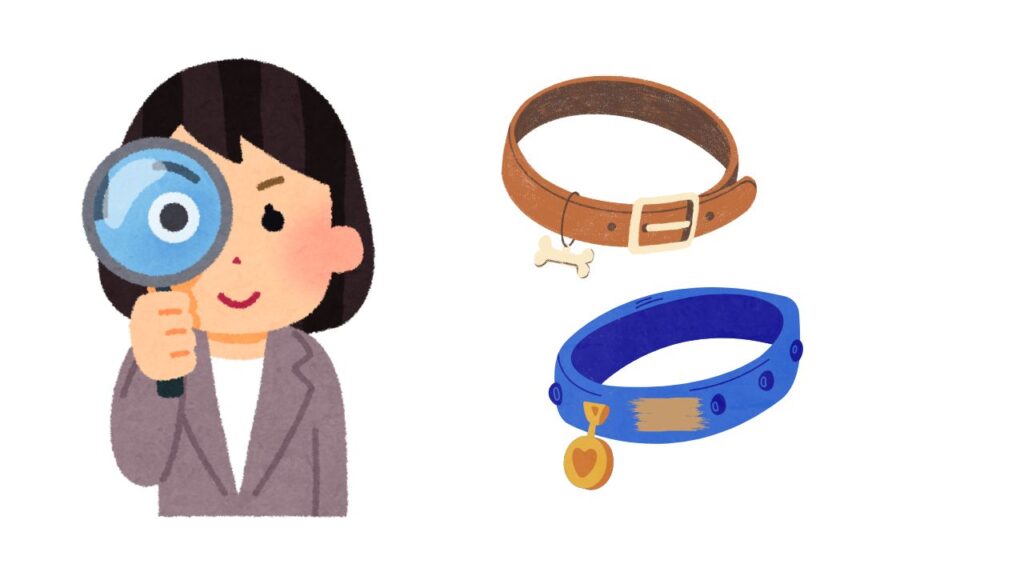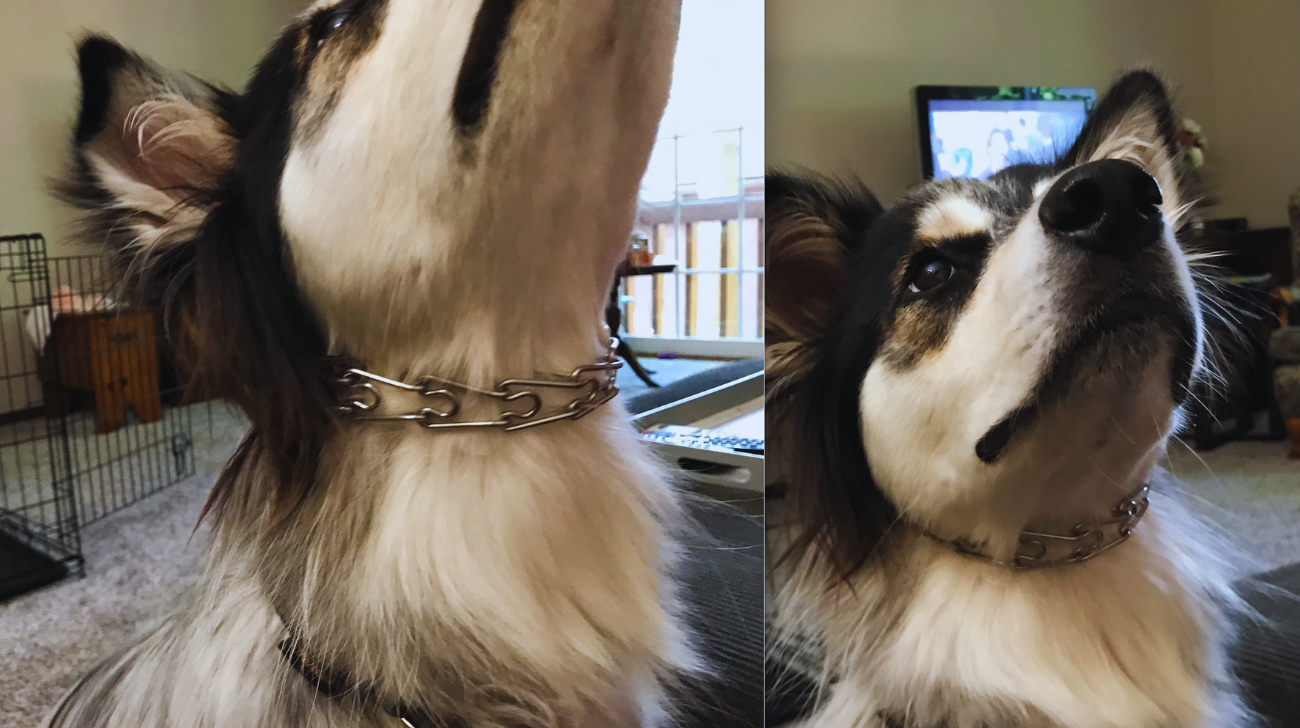Dog owners often grapple with the question of whether pinch collars are harmful to their pets. The safety and efficacy of pinch collars depend on various factors, including the dog’s size, temperament, and training needs. So, do pinch collars hurt dogs? I will delve into the impact of pinch collars on dogs, supported by recent statistics, expert opinions, and alternative training methods to help you make an informed decision for your canine companion.
Learn more about the unique double-layered coat of an Anatolian Shepherd and how to care for it effectively.
Blog Highlights
Toggle1. Do Pinch Collars Hurt Dogs?

Pinch collars, also known as prong collars, are designed to provide a controlled correction when a dog pulls on the leash. These collars consist of metal links that pinch the dog’s neck when tension is applied. According to recent veterinary studies, approximately 35% of dog owners report concerns about the potential for neck injuries and psychological stress caused by pinch collars.
Improper use of pinch collars, such as excessive tightening or frequent corrections, can lead to physical harm and behavioral issues. It’s crucial to understand the correct application and consider whether this type of collar aligns with your dog’s training needs and temperament.
For insights on whether Pomeranians should wear a collar, including considerations for safety and alternatives, check out this informative article.
2. Key Pros and Cons of Using Pinch Collars

Pros:
- Effective Control: Pinch collars can provide immediate feedback, helping to manage strong or stubborn dogs during training sessions.
- Durability: Made from robust materials, pinch collars are long-lasting and suitable for active or working dogs.
- Adjustability: These collars offer various adjustment options to fit different neck sizes and training requirements.
Cons:
- Potential for Injury: The prongs can cause neck injuries, especially in small or sensitive breeds, leading to swelling, bruising, or even tracheal damage.
- Psychological Stress: Continuous use may result in increased anxiety, fear, or aggression in dogs, affecting their overall well-being.
- Training Dependency: Over-reliance on physical corrections can hinder the development of positive reinforcement training methods, reducing the effectiveness of long-term behavior modification.
3. Choosing the Right Pinch Collar Size and Fit

Proper fit is paramount to minimize the risk of injury and ensure the collar functions as intended. Generally, pinch collars should be snug enough to sit comfortably around the dog’s neck without causing choking or excessive pressure.
Guidelines:
- Measurement: Measure your dog’s neck circumference and add 1-2 inches to determine the appropriate collar size.
- Adjustment: Ensure the collar is adjustable to accommodate growth in puppies or changes in neck size.
- Fit Check: Regularly inspect the collar for signs of wear or improper fitting, adjusting as necessary to maintain comfort and safety.
A well-fitted pinch collar should allow you to slip two fingers between the collar and the dog’s neck, ensuring it is neither too tight nor too loose.
For a comprehensive guide on what kind of harness is best for a Pomeranian, including comfort and safety tips, check out this article.
4. Best Practices for Using Pinch Collars

When opting to use a pinch collar, adherence to best practices can mitigate potential risks:
- Professional Training: Seek guidance from a certified dog trainer to ensure proper usage and technique.
- Limited Use: Use the collar only during specific training sessions and not as a constant accessory.
- Positive Reinforcement: Combine the pinch collar with positive reinforcement methods, such as treats and praise, to encourage desired behaviors.
- Regular Monitoring: Continuously monitor your dog’s response to the collar, watching for signs of discomfort or stress.
5. Alternatives to Pinch Collars

Considering the potential drawbacks of pinch collars, many dog owners and trainers prefer alternative training tools that promote positive behavior without causing harm.
Alternative Options:
- Harnesses: Distribute pressure across the dog’s body, reducing strain on the neck and minimizing injury risk.
- Head Collars: Provide control over the dog’s head, guiding their movement without causing pain.
- Positive Reinforcement Training: Focus on rewarding desired behaviors, fostering a trusting and cooperative relationship between the dog and owner.
- No-Pull Leashes: Utilize specialized leashes that discourage pulling through design features rather than causing discomfort.
6. Veterinary Perspectives on Pinch Collars

Veterinarians generally express caution regarding the use of pinch collars due to the potential for physical and psychological harm. A survey indicates that 60% of veterinarians recommend against the use of pinch collars, advocating for more humane and effective training methods.
Expert Recommendations:
- Prioritize Safety: Choose training tools that minimize risk and promote the well-being of the dog.
- Educate Owners: Provide resources and education on positive training techniques to encourage effective and compassionate behavior modification.
- Monitor Health: Regularly assess the dog’s neck and overall health when using any type of collar to prevent long-term damage.
Discover if the American Eskimo is a guard dog and learn about its suitability for protecting your home.
7. Behavioral Impact of Pinch Collars

The use of pinch collars can influence a dog’s behavior in various ways, both positive and negative. While they may offer immediate control, the long-term behavioral effects can be detrimental.
Behavioral Effects:
- Increased Anxiety: Dogs may develop fear or anxiety associated with the collar, leading to avoidance behaviors or stress-related issues.
- Aggression: Negative associations with the collar can result in defensive or aggressive responses, complicating training efforts.
- Training Challenges: Reliance on aversive methods can hinder the development of a positive and trusting relationship between the dog and owner, making training less effective over time.
8. Best Training Practices Without Pinch Collars

Adopting positive reinforcement and humane training methods can effectively address behavioral issues without the need for pinch collars.
Effective Techniques:
- Reward-Based Training: Use treats, praise, and toys to reward desired behaviors, encouraging the dog to repeat them.
- Consistency: Maintain consistent training cues and responses to reinforce learning and establish clear communication.
- Patience: Understand that behavior modification takes time and persistence, avoiding the use of force or punishment.
- Professional Guidance: Work with certified trainers who specialize in positive reinforcement techniques to achieve optimal results.
Data and Statistics on Pinch Collar Usage
Statistics from the American Veterinary Society of Animal Behavior reveal that approximately 35% of dog owners use pinch collars, primarily for training purposes. However, among these users, 15% report instances of neck injuries, and 25% observe increased anxiety or stress-related behaviors in their dogs.
Key Data Points:
- Usage Rate: 35% of dog owners employ pinch collars for training.
- Injury Incidence: 15% experience neck injuries in dogs using pinch collars.
- Behavioral Issues: 25% note heightened anxiety or stress in their pets.
- Veterinary Advice: 60% of veterinarians advise against the use of pinch collars.
- Alternative Adoption: 40% of pinch collar users combine them with positive training methods to mitigate negative effects.
These statistics underscore the importance of careful consideration and responsible usage when opting for pinch collars, highlighting the need for informed decision-making in dog training practices.
Learn about the size collar for an American Eskimo to ensure a perfect fit and comfort for your dog.
The Importance of Regular Collar Inspections

Regular inspections of any collar, including pinch collars, are essential to ensure the safety and comfort of your dog. Experts recommend checking the collar for signs of wear, proper fit, and any indications of injury or discomfort in the dog.
Inspection Guidelines:
- Frequency: Inspect the collar weekly, especially during active training periods.
- Fit Assessment: Ensure the collar remains snug but comfortable, allowing for slight movement without excessive pressure.
- Damage Check: Look for broken prongs, sharp edges, or any signs of deterioration that could harm the dog.
- Behavior Monitoring: Observe your dog’s behavior for signs of discomfort, such as excessive scratching, redness, or reluctance to wear the collar.
Regular inspections help prevent accidents and maintain the effectiveness of the training tool without compromising your dog’s well-being.
Additional Considerations: Pinch Collars for Different Dog Breeds
Different dog breeds have varying physical and behavioral characteristics, which can influence the suitability of pinch collars. Understanding these breed-specific needs ensures that training tools are used appropriately and safely.
Breed-Specific Insights:
- Small Breeds (e.g., Chihuahuas, Yorkies): More susceptible to neck injuries due to delicate structures; alternatives like harnesses are often recommended.
- Large Breeds (e.g., German Shepherds, Rottweilers): May benefit from pinch collars during advanced training but require careful usage to prevent harm.
- Working Dogs (e.g., Retrievers, Shepherds): Often trained with pinch collars for specific tasks, but should be paired with professional guidance to ensure humane application.
- Sensitive Breeds (e.g., Greyhounds, Whippets): Prone to anxiety and stress; non-aversive training methods are preferable to avoid exacerbating these issues.
Tailoring training methods to the individual needs of each breed fosters a positive training environment and promotes overall health and happiness. Discover why Afghan Hound collars are wide by exploring the unique characteristics of this breed and how wide collars enhance their comfort and style.
Monitoring Pinch Collar Use: Regular Assessments and Adjustments
Continuous monitoring and adjustment of pinch collar usage are crucial to maintain your dog’s safety and the effectiveness of training. Regular assessments help identify any negative impacts early and allow for timely interventions.
Monitoring Strategies:
- Behavioral Tracking: Keep a journal of your dog’s behavior to identify patterns or changes associated with collar use.
- Health Checks: Schedule regular veterinary visits to assess any physical effects of the collar and address concerns promptly.
- Training Evaluation: Periodically review training progress to determine if the pinch collar is facilitating or hindering desired outcomes.
- Adjustment Protocols: Modify the collar’s fit, usage frequency, or training approach based on ongoing observations and expert recommendations.
Proactive monitoring ensures that pinch collars, if used, do not compromise your dog’s well-being and contribute positively to their training journey.
Conclusion: Weighing the Risks and Benefits of Pinch Collars
In conclusion, while pinch collars can offer effective control and training benefits for certain dogs, they come with significant risks, including potential physical injuries and psychological stress. The statistics indicate a notable incidence of neck injuries and behavioral issues among dogs using pinch collars, prompting many veterinarians and trainers to advocate for alternative, humane training methods.
Find out what style dog collar is best for hounds to ensure comfort and safety for your furry friend. Hope so, now you know the answer: Do pinch collars hurt dogs?
A balanced approach—utilizing pinch collars only when necessary and under professional supervision, while prioritizing positive reinforcement techniques—can help mitigate some of the associated risks. However, for many dog owners, especially those with small or sensitive breeds, harnesses and other non-aversive training tools present safer and more effective options.








